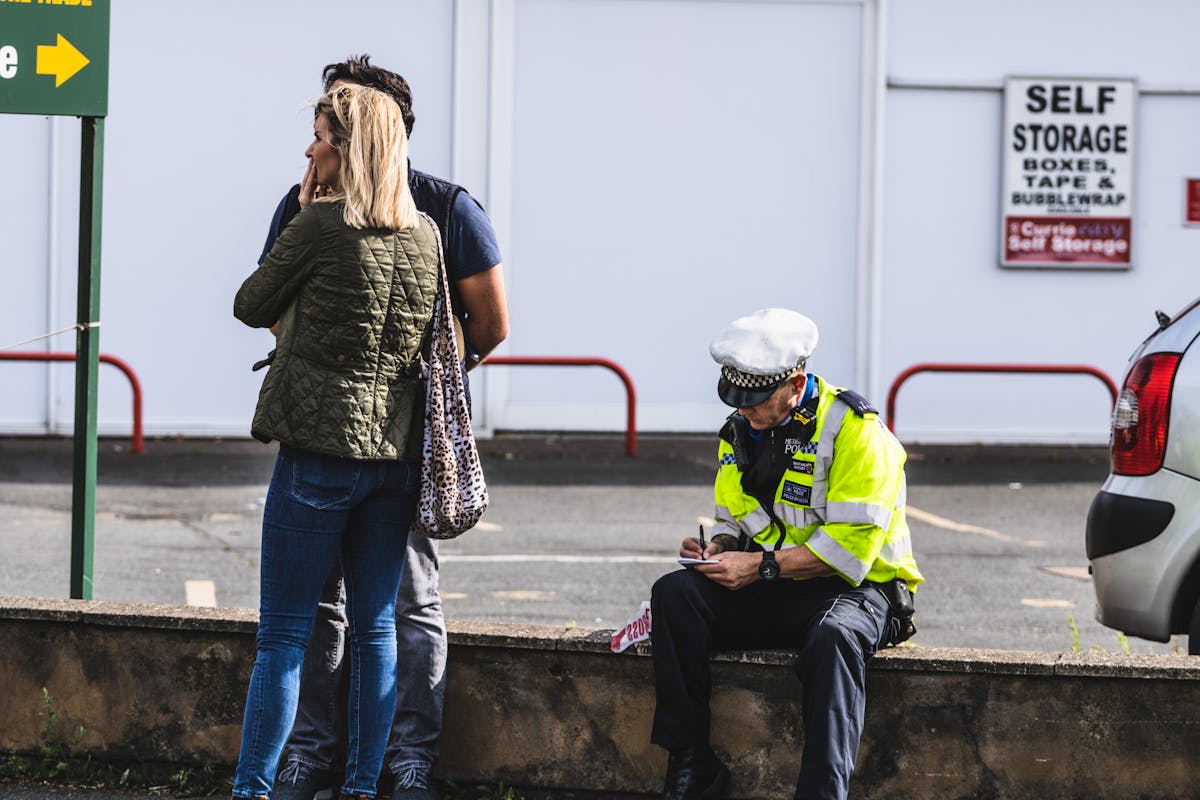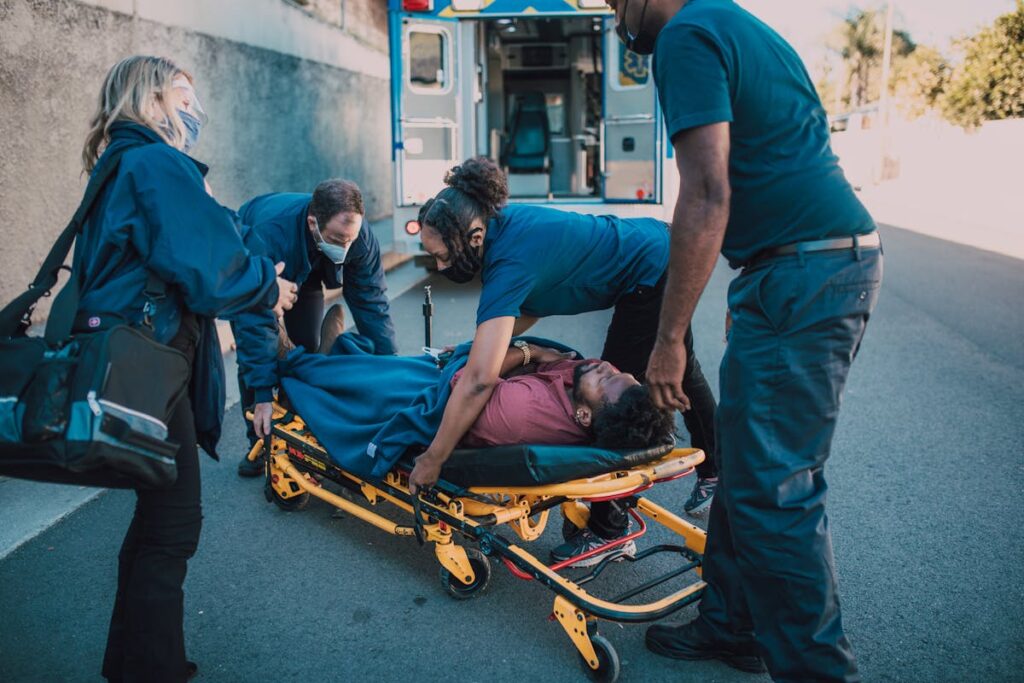Lawyers employ a systematic approach to ascertain involvement in an accident by scrutinizing various types of evidence. They meticulously analyze police reports, medical records, and eyewitness testimonies, ensuring consistency and reliability. Reviewing accident scene evidence, traffic camera footage, and vehicle damage reports offers additional insights. Social media and discussions with accident reconstruction experts further aid in constructing a factual narrative. The next steps reveal the intricate methods ensuring thorough case evaluation.
Analyzing Police Reports
When investigating whether an individual was involved in an accident, lawyers often begin by analyzing police reports, as these documents provide a foundational account of the incident. This initial step involves interpreting police jargon to understand the sequence of events and the involved parties. Lawyers meticulously dissect the report to assess the reliability and relevance of each statement. A critical aspect of this analysis is evaluating witness credibility, which can heavily influence the case’s direction. Lawyers consider factors such as consistency in witness statements and potential biases. By objectively examining these components, they can construct a clearer picture of the accident’s context and determine the likelihood of an individual’s involvement. Each piece of information is scrutinized to build a strong, evidence-based narrative.
Reviewing Medical Records
In the pursuit of determining involvement in an accident, reviewing medical records serves as a crucial step for lawyers. These documents provide critical evidence regarding injuries sustained, treatment received, and the timeline of medical intervention. Ensuring record accuracy is imperative, as discrepancies can impact the case’s credibility. Lawyers meticulously analyze these records to correlate reported injuries with the accident’s specifics, establishing a causal link. However, they must navigate the intricacies of medical privacy laws, which protect patient information. Obtaining consent or the necessary legal authorization is essential to gain access to these records. By maintaining a balance between thorough investigation and respecting medical privacy, lawyers can effectively use medical records to substantiate claims of accident involvement.
Examining Accident Scene Evidence
In evaluating accident scene evidence, lawyers systematically analyze physical damage to vehicles and property to determine the mechanics of the incident. They also evaluate witness statements, which provide essential perspectives on the sequence of events leading up to and during the accident. Together, these elements help construct a factual narrative that supports or refutes an accident claim.
Analyzing Physical Damage
How do legal experts determine the specifics of an accident through physical evidence? They begin by conducting a thorough damage assessment. This involves examining the condition of vehicles, infrastructure, and other objects at the scene. Legal experts look for signs of paint transfer, deformation, and impact points which provide clues about the collision dynamics. Scratches, dents, and broken parts are meticulously analyzed to understand the force and angle of impact. Additionally, skid marks and debris patterns are evaluated to reconstruct sequences leading to the accident. By comparing this data with vehicle specifications and accident reconstruction models, experts can estimate speed and impact force. This physical evidence plays an essential role in establishing fault, causation, and understanding the accident’s overall context.
Evaluating Witness Statements
While physical evidence provides tangible insights into an accident, witness statements offer a complementary perspective that captures human observations and perceptions. Legal professionals evaluate these statements to assess witness reliability and statement consistency. A reliable witness is one whose account remains stable over time and aligns with other evidence. Lawyers meticulously compare individual statements to identify discrepancies or concordances that may affect the case’s credibility. Consistency is essential; statements that diverge markedly from established facts or each other can undermine their validity. Additionally, factors such as the witness’s proximity to the accident, their vantage point, and potential biases are analyzed to gauge reliability. Ultimately, witness statements, when corroborated with physical evidence, enhance the understanding of the accident’s circumstances.
Utilizing Traffic Camera Footage
When accidents occur, traffic camera footage often serves as an essential tool for lawyers seeking to establish the facts of the incident. The utilization of traffic camera angles provides multiple perspectives, allowing for a thorough analysis of the scene. Lawyers can assess the trajectory and movement of vehicles involved, identifying potential causes of a collision. Footage timestamps play a significant role in corroborating timelines, offering precise data on the sequence of events. By synchronizing timestamps with other evidence, such as vehicle speed and traffic signals, lawyers can construct an accurate timeline of the accident. This objective data helps them assess liability and determine the validity of claims. Traffic camera footage, consequently, becomes an indispensable resource in legal proceedings related to vehicular accidents.
Gathering Eyewitness Testimonies
Eyewitness testimonies serve as an important component in reconstructing the events surrounding an accident. Lawyers rely on gathering testimonies from individuals who were present at the scene to piece together accurate narratives. Eyewitnesses provide unique perspectives that can either corroborate or contradict other forms of evidence. However, the reliability of these accounts greatly depends on eyewitness credibility. Factors influencing credibility include the witness’s vantage point, attentiveness, and any potential biases. Lawyers meticulously assess these variables to determine the weight of each testimony. Inconsistencies in statements or evidence of impaired perception can diminish the validity of the testimony. Therefore, while gathering testimonies is vital, a lawyer must critically evaluate each account’s credibility to construct a robust case. Such assessments guide legal strategies and case outcomes.

Investigating Vehicle Damage Reports
When investigating vehicle damage reports, lawyers systematically analyze repair estimates to determine the extent and nature of the damage that occurred during the accident. They also assess damage photographs to verify the accuracy of these estimates and to better understand the impact’s severity. These elements collectively provide a thorough view of the incident, aiding in the reconstruction of the event timeline and establishing liability.
Analyzing Repair Estimates
Repair estimates serve as a critical tool in understanding the extent and nature of vehicle damage following an accident. These documents offer detailed insights into the parts and labor required to restore a vehicle to its pre-accident condition, facilitating repair cost analysis. Lawyers often scrutinize these estimates to evaluate the financial impact of the damage and to verify the estimate accuracy. Discrepancies between initial assessments and actual repair costs can signal potential issues such as underreporting or exaggeration of damage. By meticulously analyzing repair estimates, legal professionals aim to corroborate the accident’s occurrence and assess liability. This objective evaluation plays a significant role in legal proceedings, as it helps establish a factual basis for claims and negotiations in accident-related cases.
Assessing Damage Photographs
In addition to repair estimates, damage photographs constitute an essential component in the investigation of vehicle damage reports. Photographic evidence analysis enables a thorough evaluation of the extent and nature of the damage sustained. By employing damage assessment techniques, experts can ascertain the impact’s severity and the possible sequence of collisions. These images offer an objective visual record, allowing for the identification of inconsistencies between reported incidents and actual damage. High-resolution photographs are scrutinized for telltale signs such as paint transfer, deformation patterns, and alignment discrepancies. Such analysis aids in corroborating or challenging witness statements and repair estimates. The use of standardized angles and lighting enhances the reliability of photographic evidence, ensuring a precise interpretation of the vehicle’s condition post-accident.
Leveraging Social Media Insights
As social media platforms become increasingly ingrained in daily life, they serve as a valuable resource for lawyers seeking insights into potential accidents. By employing social media monitoring, legal professionals can analyze online behavior to gather relevant information. Users often share posts, photos, or status updates that inadvertently reveal details about their involvement in an accident. These digital breadcrumbs can include timestamps, location data, and descriptive accounts that may corroborate or contradict formal claims. In addition, the analysis of online interactions, such as comments and shared content, can provide additional context or identify witnesses. Lawyers utilize this digital evidence to construct a thorough understanding of incidents, ensuring they have a factual foundation for their cases, thereby enhancing their investigatory capabilities.
Consulting With Accident Reconstruction Experts
When working to build a thorough case, lawyers often turn to accident reconstruction experts to gain a clearer understanding of the events leading up to and following an incident. These professionals employ scientific methods to conduct accident analysis, using data from the scene, vehicle damage, and witness statements. Their role is essential in reconstructing the sequence of events, determining the point of impact, and identifying contributing factors. By providing expert testimony, these specialists can offer detailed insights that are vital in legal proceedings. Their evaluations can corroborate or challenge claims made by involved parties. Lawyers rely on this expert testimony to substantiate arguments, ensuring that evidence presented in court is grounded in a meticulous examination of the accident’s physical parameters.
Assessing Insurance Claims Data
A crucial component of understanding an individual’s involvement in an accident lies in the meticulous assessment of insurance claims data. Legal professionals scrutinize insurance claim trends to determine patterns indicative of accident occurrences. This data offers insights into policyholder behavior, revealing discrepancies or consistencies with reported events. By analyzing claims data, lawyers assess the frequency and nature of claims submitted by the individual, identifying any anomalies that may suggest fraudulent activities or exaggerations. Patterns such as repeated claims within short intervals can raise red flags about the policyholder’s conduct. Additionally, comparing data across similar cases aids in establishing a baseline for typical accident scenarios. This objective analysis of insurance data plays a significant role in corroborating or refuting claims of accident involvement.
Frequently Asked Questions
Can Lawyers Access Phone Records to Confirm Accident Details?
When addressing whether lawyers can access phone records to confirm accident details, phone privacy and legal permissions are essential. Lawyers require court orders or client consent to legally obtain such records, ensuring compliance with privacy regulations and ethical standards.
How Do Lawyers Verify the Time of the Accident?
Lawyers verify the time of an accident by analyzing witness statements and police reports. These documents provide detailed accounts and timelines, enabling legal professionals to cross-reference and establish accurate incident timelines for their cases.
Are Private Investigators Used to Gather Accident Evidence?
Private investigators may be utilized to gather evidence in accident cases. They often focus on obtaining surveillance footage and collecting witness statements to establish a thorough understanding of the incident, aiding lawyers in building a robust case.
Can Lawyers Determine if an Accident Was Intentionally Staged?
Lawyers can determine if accidents were intentionally staged by analyzing evidence such as inconsistencies in witness statements, vehicle damage patterns, and reviewing surveillance footage. They often collaborate with accident reconstruction experts to uncover potential accident fraud indicators.
Do Lawyers Consider Weather Conditions During the Accident Analysis?
Lawyers analyze weather impact during accident reconstruction to assess contributing factors. They evaluate conditions like rain, fog, or ice, which might have influenced the incident, aiding in understanding liability and determining the accident’s cause thoroughly.

